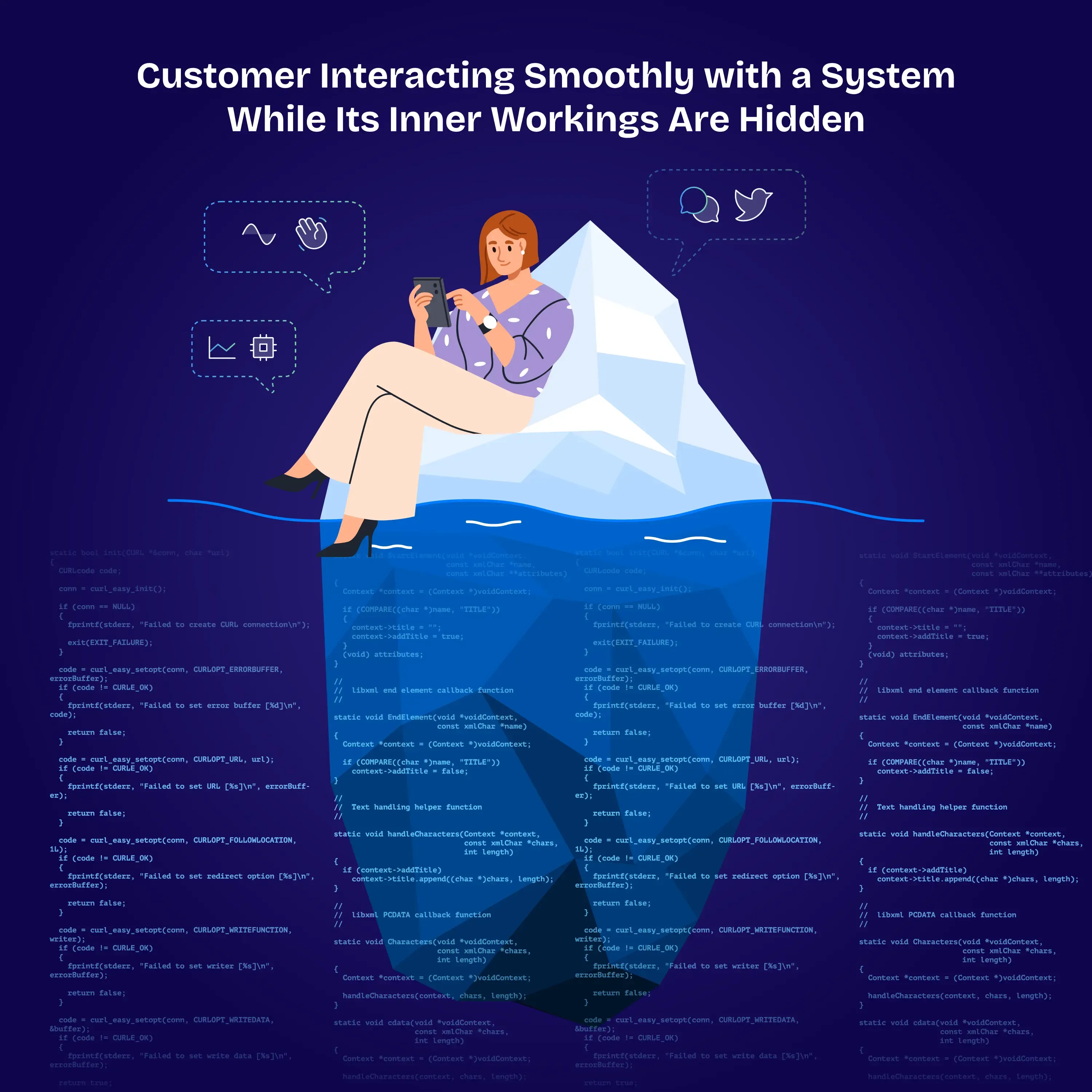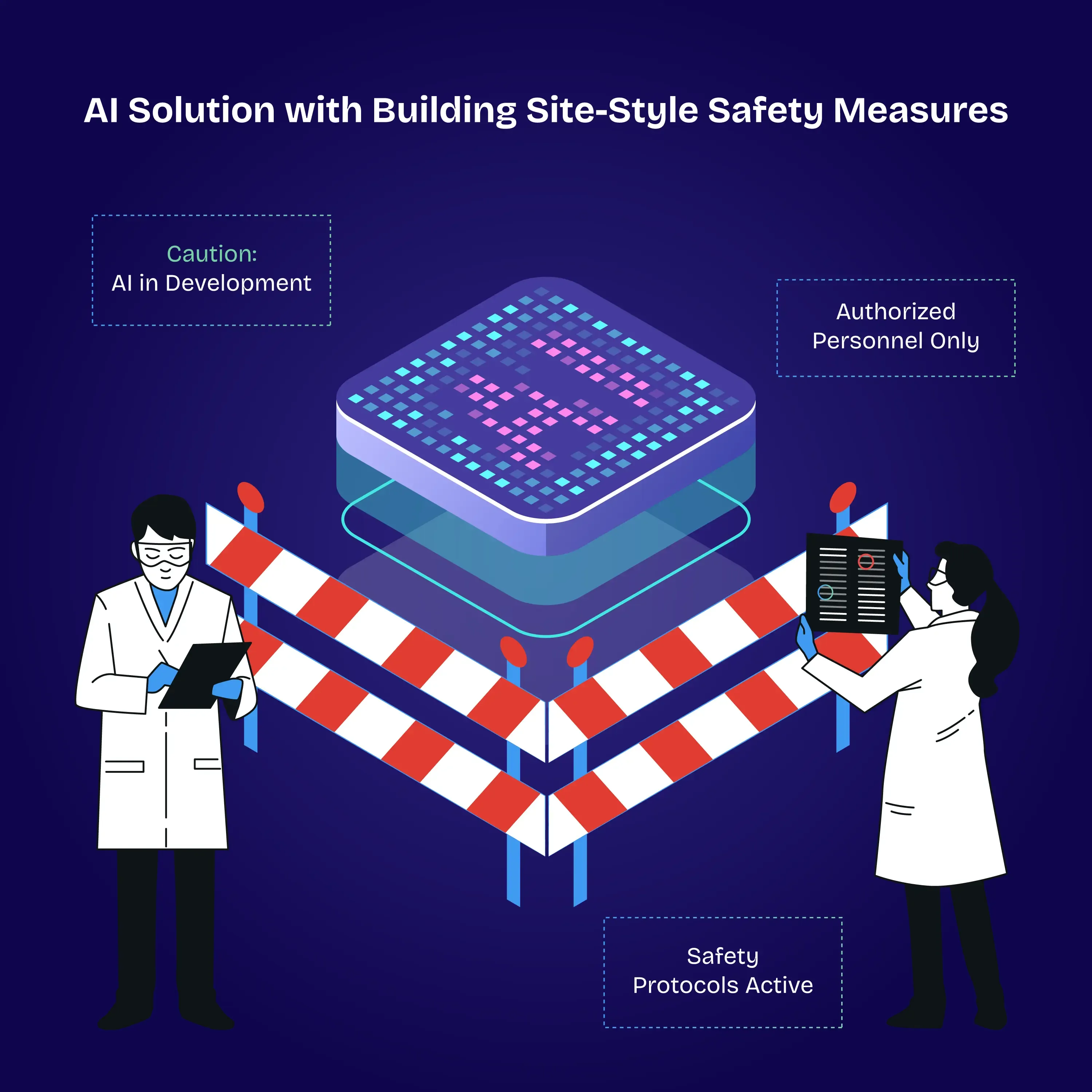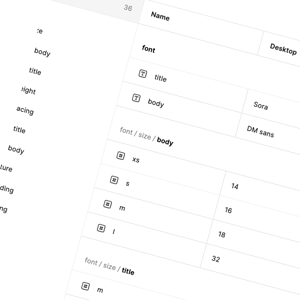Customers aren’t particularly interested in cool AI trickery and clever gimmicks. They want an experience that works for them. This is what invisible AI is all about. Sometimes known as ambient intelligence, invisible AI builds decision-making solutions deep into digital products, so deep that the user only feels the results rather than seeing all the nuts and bolts.

We’re talking about music apps that pick out that perfect energy-boosting track ahead of your workout or banking platforms that predict bill spikes ahead of time and give you instant repayment options to avoid this. These are smart solutions that “get it.” And here’s how you can make this work for your business.
What makes AI invisible?
Outside of the definitions listed above, what are we actually talking about here? Invisible AI needs:
- Zero cognitive loads: The user doesn’t need to think about whether they want to use or activate the algorithm.
- Contextual sense: The user feels like the AI is an extension of their journey, not a tacked-on feature.
Basically, this is AI that works behind the scenes. It’s a seamless part of the user’s experience.
Why should you care about this in 2025?
Well, mainly because your customers care about it. While traditional gripes about delivery costs still top the list of reasons for cart abandonment, the nature of an online store is also important to your users.
Around 46% of online shoppers say the number of options and volume of information makes them overwhelmed, while 20% said they leave a store if they immediately get a pop-up when they visit. These are examples of how businesses get the user experience all wrong.
But the answer is not just to throw AI at the problem. The same report said 63% of shoppers feel that the e-commerce websites they visit try to force purchasing decisions with “inappropriate or manipulative tactics.”
This is why it’s so important to utilise AI in the right way, with solutions that:
- Remove the friction from the user journey
- Cross-sell and recommend in a way that feels genuinely helpful
- Enhance efficiency by automating micro-decisions, removing the need for human intervention
Foundations: Putting data and ethics first
You’ll need great data for invisible AI, of course. This includes:
- User-behaviour data, like clicks, scrolls, and on-page time
- Environmental data, like user location and device orientation
- Transactional data, like previous orders and payments
But don’t forget about those “inappropriate and manipulative tactics.” All this data needs to be gathered in an ethically and legally sound way, by verifying user consent and keeping an eye on retention and storage regulations.
Everything needs to be reflected in the audit trail for maximum transparency and observability.
Building the architecture
Invisible AI is built upon a four-layer structure:
- Sensing layer: SDKs, IoT devices, and other solutions that capture data in real time
- Feature engine: Incorporates user history and environmental factors to enhance the captured data
- Decision service: Works generative, ranking, and classification AI into the process to reach a decision
- Delivery layer: Delivering the decision results as part of the user interface
Using containerised deployment is valuable here, as it allows each of these layers to operate independently, scaling as required. Building other technologies into the layers helps too, like edge computing to accelerate decision-making and cloud endpoints to increase calculation capability.
Designing for trust and subtlety

Guardrails and protections help to keep your ambient intelligence helpful and avoid falling into the trap of manipulation, a big no-no for your customers.
- Intuitive journeys: Make sure all AI outputs fit within the user’s desired pattern, helping them in an intuitive way.
- Transparent explanations: A small, lightweight explainer link helps to ensure the process remains transparent, so the user knows the reasoning behind a recommendation.
- Failsafe points: With a failsafe, the user experience reverts to the default setting, so the journey is not interrupted if something goes wrong.
- Comprehensive accessibility: All users need to benefit from invisible AI, and accessibility features like captions and alt text make this possible.
Be sure to test all these points. Gain feedback on how the AI feels; if test candidates say it feels intrusive or manipulative, consider how to change this.
Developing a pilot project
You won’t be able to roll out invisible AI en masse across all your online assets. Instead, you’ll need a pilot project.
- Limit this pilot project to just one user persona, one journey, and one key metric to keep it on track.
- Set out your timeline, for example, eight weeks from the discovery phase to live launch.
- Run the pilot over at least 10,000 user sessions so you have enough data to gain real insight.
- Operate the pilot alongside non-AI variants so you have a control feature to evaluate project success.
Building the platform
After the pilot project has demonstrated its value, you can start thinking about incorporating solutions into a broader platform.
- Use recyclable decision-making components, linked through APIs so they can be easily deployed on future projects.
- Make context features available in a centralised resource and deliver as required.
- Build a resource of code templates for common tasks so these features can be rolled out frictionlessly.
- Make data like accuracy, latency, cost, and other metrics available via a centralised dashboard.
Implementing safeguards
The AI is only invisible to the end user. From your end, it needs to be carefully governed and managed.
- Monitoring bias: Assess the AI’s tendency to bias in inference and interpretation.
- Tracking concept drift: Make sure AI models reflect changing customer behaviours and requirements across the year.
- Deploying opt-outs: Give users the opportunity to opt out.
- Using kill switches: Build effective kill switches into the AI, just in case compliance is breached or an error occurs.
- Employing a review board: Implement a human review board to regularly assess the function and operation of the ambient intelligence.
Measuring core metrics
Once your invisible AI is up and running, you need to keep monitoring its progress across core metrics. These include:
- Customer satisfaction improvements
- Conversion and goal completion rates
- Support ticket numbers
- Session duration
- Cost per inference
- GPU usage during peak hours
- Compliance issues or incidents
Accelerating ambient intelligence with a digital partner
Though invisible AI is designed to be lightweight, actually implementing it can feel like a lot of heavy lifting. This is where a digital partner, like Shout, can make a real difference. Here’s how:
- Achieving data discovery in days rather than weeks
- Providing modular components so that platforms can be constructed much more quickly
- Offering interdisciplinary expertise, covering behavioural design, data protection law, product strategy, and more
- Supporting in-house teams as they gain the operational knowledge they need
- Giving an external perspective that keeps you on track to improve customer value
Working with an agency team can translate ideas to tangible wins in only one quarter. This way, you’ve got something to celebrate early on rather than a seemingly endless process of pre-development.
The future of invisible AI: Multimodal and agentic experiences
Where does invisible AI go from here? By the end of 2025, it’s expected that invisible AI will be working with a broader spectrum of data, including biometric data and nuanced visual and auditory interpretations.
On a broader level, agentic AI will increasingly be used to coordinate invisible AI services, bringing together micro-interactions to form a single conversational process. Businesses need to plan for these developments to keep on achieving maximum advantage from ambient intelligence.
Final thoughts
Invisible AI is all about turning intelligence into intuition. It’s about delivering the results customers want, need, and expect from interactions rather than trying to force specific outcomes or intrude into the customer’s space.
Getting this right can be huge for your business. Customer satisfaction rises, along with market dominance, revenue, and operational efficiency. Conversely, getting it wrong can be a problem. As we’ve seen, if customers are feeling uneasy about all these artificially intelligent developments, they will make their displeasure known.
This is why working with an experienced delivery partner is so valuable. The right partner keeps you on track and turns your invisible AI plans into a tangible, beneficial reality.























